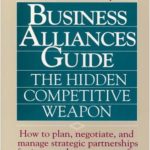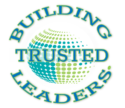OUR JOURNEY TO DISCOVER THE SOURCE CODE FOR SYNERGY
Our quest has been to find the answer to four fundamental questions, which are at the core of successful leadership interaction in teams, organizations, and alliances spanning international boundaries:
- Can people of greatly different backgrounds and beliefs collaborate and Create Synergy?
- Is there a transcendent “Design Architecture” which brings out the best in humans?
- Can a Leadership System be developed to replicate extraordinary success time after time?
- Can we create an effective System of Collaborative Excellence with “sticking power?”




















The journey began upon Robert Porter Lynch’s return from a tour of combat duty in Vietnam as a Naval Officer. He had helped commission two fast frigates, and, in the war zone, won a special commendation for creating high performance teams to ensure operational readiness. His next Navy assignment was as a member of Admiral Zumwalt’s special unit to find a better way for senior commanders to lead more collaboratively. Today we call this “Collaborative Leadership.” The new ideas were brought to officers in the fleet, while resolving underlying frictions between officers and enlisted crews.
After the Navy, Robert was searching for an answer to the question as to whether different cultures could work together without destroying each other. With a degree in International Relations from Brown University (1969), he was convinced there was something missing in the way global power was exercised, constantly resulting in wars. He decided to get a degree in Organization Development and Human Behavior through a program jointly offered through Harvard’s Schools of Business and Education, and MIT’s Sloan School of Management. While learning a great deal from some of the top authorities in the field, he graduated knowing something was still missing. There was insufficient perspective on seeing organizations as “systems,” poor conceptions of strategy, the importance of energizing people with powerful beliefs, and how collaboration could produce synergy.
In 1982 Robert read an article by Peter Drucker called “The Shape of Industry to Come.” Drucker described how corporations would start to link into “confederations” where they worked together to solve complex problems. Quickly Robert realized that he was destined to be the “architect” for these confederations, which were soon to be called “Strategic Alliances.” He began researching and gathering a team of experts who had experience forming international joint ventures.
By 1985, Robert started writing his first book : Practical Guide to Joint Ventures and Corporate Alliances. He asked his mentor at Harvard Business School, Paul R. Lawrence to help adapt his “differentiation and integration” methodology to the world of strategic alliances, which became the foundation of alliance management. The book was published in 1987 by John Wiley, and is still sold today.
The American Management Association asked Robert to begin teaching courses in Joint Ventures and Alliances to senior executives in the United States, Canada, and then Europe. He also taught as an Adjunct Professor in Executive Education at the University of British Columbia in Strategic Alliance Best Practice Architecture, at the University of San Diego in Supply Chain Collaboration & Innovation, and at the University of Alberta in Building Private-Public Partnerships. Over the intervening years, over 40,000 senior leaders and managers have attended his highly popular workshops.
As the Strategic Alliance message began spreading, in 1992 he launched the field’s first extensive Best Practice study of companies around the world. This sought to answer several questions: “How to become the ‘partner of choice’?” “What is the underlying ‘systems design architecture’ that enables collaboration to flourish across different functions, industries, and cultures?” “How could alliances trigger innovation?” The following year this new information had been converted into a second book: “Business Alliances Guide – the Hidden Company Weapon” which sold over 35,000 copies.
A year later IBM, then struggling to create a new service-oriented business model, came to Robert to ask if the Alliance Best Practice Architecture could be converted into a Workbook for Software Alliances that detailed the Best Practice Systems Design into Best Processes, Steps, Checklists, Key Factors for Success, and Tips from Experts.
By the middle 1990s, it was clear that our Alliance Best Practices Systems Architecture was tilting the playing field in our favor. With a reasonably disciplined use of our methodology, alliance practitioners could expect 75-80% success rates (compared with the dismal 25% success without our methods). What’s more, as Paul Lawrence had predicted, the use of integration approaches was triggering Collaborative Innovation. And, importantly, we saw a cadre of alliance professionals emerging that wanted to grow and hone their skills.
In 1998, using his large network of alliance practitioners as a base, Robert launched the Association of Strategic Alliance Professionals (ASAP) – the first professional organization to support this growing field. As ASAP began to grow, there was a clamoring need for more than training. ASAP, with Robert serving as Chairman, went back to IBM to request it “donate” its Best Practice Workbook to ASAP. IBM agreed and, with the help of Dow Chemical, Blue Cross-Blue Shield of Florida, and several ASAP members, we converted the Workbook into a more universal guide for all sorts of alliances. That Workbook then morphed again ten years later into an upgraded set of best practices. Overall, the Alliance Best Practice Architecture is embedded in tens of thousands of alliances across the globe, and has contributed enormously to the growth of collaborations worldwide.
Several years later, ASAP used its Best Practices along with the British Standards Institute to formulate ISO 44001 – Collaborative Business Relationship Management.
While most alliance practitioners were using alliances to build sales or evolve new products from research and development, Robert recognized the deep importance of the competitiveness of entire value chains – from suppliers on the “input” side of companies, to “research partners” bringing innovation, to “internal alliances” inside companies, to “solutions partners” who could provide integrated answers to a customer’s complex problems, to “marketing, sales and distribution” partners who ensure closer contact with customers, learning what they need and what innovations the value chain must provide. In his work with Steve Rogers (now President of the Collaborative Leadership Institute) at P&G, they were able to make Collaborative Innovation with suppliers a major part of P&G’s “Connect & Develop” strategy that quadrupled the innovation stream from suppliers in only five years.
This approach to seeing companies in the context of their Value Chains was instrumental to what would later emerge as “Collaborative Systems Architecture.”
About this same time, Dow Chemical asked Robert to train several hundred professionals in Dow’s global corporation about alliances. Curt Volkmann (now Chief Operations & Innovation Officer with the Collaborative Leadership Institute), who sponsored the programs, was interested in more than just alliances; he recognized the importance of people working together across the great expanse of a global network, both internally and with external partners. Curt challenged Robert:
“Alliances will never have the strong foothold they need until we can adapt these ideas to internal alliances.”
That challenge was the final “ultimatum” that raised the level of the collaborative quest to a new stratum.
– Could external strategic alliances become the seed-bed for learning about collaboration inside highly diverse worlds?
– Could our alliance architecture be adapted for a broader usage in virtually any place where people interacted?
– Could we begin to channel the energies of conflict and polarization into collaboration and paradigm shifting?
These questions and many others that needed examination would take another twenty years to be resolved – it meant leaving no stone unturned, and that every paradigm we had learned through academia and experience had to be challenged.
In the mid-2000s we were asked by Flextronics (now Flex) to develop a new methodology for Collaborative Negotiations. At that time, the other negotiations models were based on either an adversarial approach (win-lose) or a transactional approach (win-win). We knew from our experience, there was a much better way, and it had worked innumerable times in our alliance formation negotiations – a collaborative co-creation approach that went far beyond win-win (which “divided the pie” fairly). Our approach was revolutionary – “create bigger pies” for all parties. If we couldn’t figure out how to create a bigger pie (synergy: 1+1>2 or 1+1=3), then maybe the parties shouldn’t be constructing an alliance. This was a vital piece in the meta-structure of creating synergy.
As strategic alliances began evolving from “opportunistic, hit-or-miss” configurations to more “structured and designed” arrangements, one weak area kept emerging – distrust kept taking down alliances, especially when key first-generation alliance leaders were replaced in their career cycles with newer, more transactional or less disciplined counter-parts.
The prevalence of trust breakdowns called for a new level of thinking about trust – a systems architecture that would enable a deep understanding of trust, as well as distrust. The design required a disciple that would enable leaders to create trust, sustain trust, rebuild trust when it broke down, and especially to catch trust breakdowns before they could spiral downward into a crisis. Robert again connected with Paul Lawrence, who was deeply interested in integrating the “trust architecture” with his lifelong quest for understanding what “drives” human behavior. Together they joined Paul’s 4 Drives of Human Behavior with Robert’s Trust Architecture, creating a highly effective and understandable design system based on the neuro-science of the brain could be taught easily and quickly to people regardless of their intellectual prowess.
Trust was not the only missing piece to the collaborative “puzzle” however.
One massive missing piece was understanding “Collaborative Economics” – how value was created.
Robert’s Canadian team worked in the trenches understanding how the process of value creation differed dramatically from standard accounting and economic theory. This produced a systematic breakthrough in how to create a quantum jump in productivity, innovation, and profitability, culminating in a tool called “Trust’s Impact on Profits” (TIPs).
Back in 1996, Robert launched an initiative which didn’t “stick” because was too far ahead of its time: the “Fastime Networked Enterprise,” which we called the “most revolutionary shift in the nature of commerce in two hundred years.” No one seemed interested in it back twenty-five years ago.
However, the with the emergence of the Digital Age (we now call it “business eco-systems”), the need for understanding Collaborative Leadership Excellence has risen to a necessity. As we move into the 2020s, we recognized the networked eco-system actually did not have a systems design architecture to enable the Digital Age to flourish and prosper. The Fastime Best Practices, when used in the aura of high trust, were doubly effective.
What distinguished the Digital Age Eco-Systems networks from the earlier versions two decades ago is both their level of complexity and their multi-member collaborations.
To corral the complexity issue, Robert enlisted Professor George Jergeas, Senior Professor of Project Management at the Engineering School at the University of Calgary. Together they reexamined the reams of data on why so many large complex projects were going “off the rails” with 100% time and budget overruns and a multitude of law suits. It soon became evident that what separated success and failure, time and again, boiled down to the type of leadership and culture that was created in the project. Collaborative leaders created collaborative cultures, which got the job done on-time and on-budget.
In addition, when supply chain management was adversarial or transactional, large over-runs were inevitable. Collaborative supply chains enabled rapid communications, honest interaction, and innovative problem solving to keep things rolling.
But more was really needed – the legal system, which is inherently adversarial, required a new form of “collaborative contracting” to ensure the players weren’t set at odds with each other before the project was launched. With the right legal thinking that aligned with the strategic, cultural, and operational objectives of the complex project, we were able to reduce the chances of lawsuits to near zero.
There were still several major tasks ahead.
While all the elements of the Collaborative Excellence Architecture had been designed, developed, and field tested, they needed to be fully integrated so that one step would lead seamlessly and effortlessly into the next.
And we then had to simplify everything so that it could easily be taught and remembered.
And lastly, we needed a delivery system to ensure it was embedded in organizational culture both effectively and economically. That method is called “Transformative Action- Learning Engagement” (TALE), which you will learn about in this website. The delivery is part on-line videos, augmented by a coach who acts as both a “consultant” and “resultant” (someone who insists on helping your team produce results, not just giving friendly advice on a “take it or leave it” basis.
Now our journey, which has traversed over fifty years, has hit a pivotal point – we have created a fully integrated Systems Design Architecture for Collaborative Excellence, which we believe is the only such thing of its kind in the world. We thank the many companies and partners that have helped lead us up the mountain, and for their patience as we blazed a new pathway and shift a few paradigms along the way.
We feel confident that it will enable leaders and managers to transform their organizations in a way that is heretofore unprecedented. The Architecture has been tried and tested in the field – we know it works.
We now offer this to organizations that are committed to collaborative excellence and are willing to stand strong for building a bold new future.
